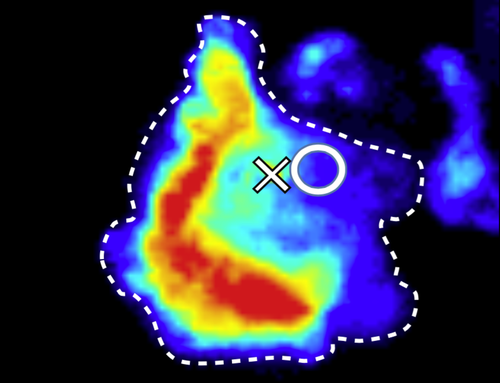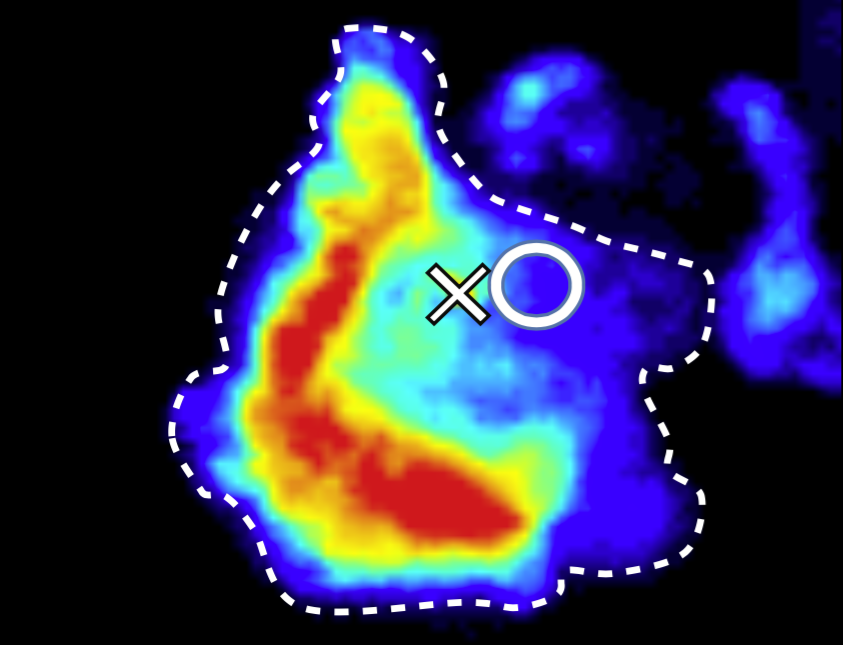Recipe for a Quantum Thermometer
The most precise nanoscale thermometer is a quantum system with two energy levels, according to a team of theorists. Ideally, there is a single quantum ground state at a lower energy level and many states at some higher energy level. The team determined the theoretical limits of thermometer precision in a range of experimental scenarios. Their work may improve the design of sensitive thermometers that can probe the nanoscale physics of chemical and biological reactions, track heat in electronic circuits, or monitor operations within cells that are targets of medical treatment.
In the past two years, researchers have developed quantum thermometers that can measure millikelvin temperature variations across nanoscale regions. They have built these thermometers out of single quantum dots—tiny islands of semiconductor within a larger solid—or with impurities in diamond nanocrystals. The thermometers have, for example, measured the temperatures of semiconductor electrons [1,2] and the thermal variations inside a living cell [3]. In most cases, the technique involves first letting the thermometer equilibrate at the sample temperature and then making precise measurements of its spectrum or detecting its temperature-dependent fluorescence.
This experimental work has raised questions about the ultimate precision of these thermometers and what sort of object makes the ideal nanoscale thermometer. Anna Sanpera and her colleagues at Barcelona State University in Spain and Gerardo Adesso of the University of Nottingham in the UK now believe that they have answers to these questions. They use a new theoretical approach that combines mathematical tools from quantum mechanics and thermodynamics.
“At the end of the day, what we have to measure to estimate temperature is closely related to the energy of the thermometer,” says Barcelona team member Luis Correa. The team shows that the most sensitive nanoscale thermometer has the largest heat capacity, which means that small changes in environmental temperature have a large effect on its energy.
By maximizing heat capacity mathematically, the team derives an expression for the maximum sensitivity of a nanoscale thermometer. This sensitivity depends on the thermometer’s energy level configuration and the number of available quantum states. For example, the nanodiamond thermometer that has been used in experiments has a single ground state and two excited states with the same energy. The team finds that the most precise thermometer is a system with two energy levels, like the nanodiamond, but where the upper energy has not two states, but a large number of them.
However, the researchers find a trade-off between a thermometer’s precision and the range of temperatures at which it can operate. Increasing the number of excited states increases precision, but it also narrows the temperature range over which the thermometer operates with maximum efficiency.
The team suggests that an experimenter could first use a thermometer with a low precision but a wide temperature range to roughly determine the sample temperature. Then successively more precise probes could be used at different locations—say, in a circuit or a cell—to map smaller temperature variations across different regions of the sample.
In reality, it may not be possible for a thermometer to fully equilibrate with the sample because, for example, the temperature fluctuates in time. In this case, the researchers find that a two level thermometer that starts out very cold and therefore in its ground state (or close to it) before contacting the sample gives the best precision. With a limited amount of time, they also show that the probe should be checked as often as possible, with repeated cycles of cooling and reconnection with the sample.
Correa says this work will help researchers learn where they can improve their experiments. Improved precision in temperature measurements could shed light on problems such as the dissipation of heat in nanoscale circuits and the thermal processes inside cells.
This theoretical framework is an “important step forward in developing and using more reliable thermometers based on quantum effects,” says quantum experimentalist Martin Kroner of the Swiss Federal Institute of Technology (ETH) in Zurich. He says that researchers now have techniques to reach the low temperatures required to observe quantum phenomena, but the new results address the next, “very difficult problem” of measuring the precise temperatures of those systems.
This research is published in Physical Review Letters.
–Tamela Maciel
Tamela Maciel is a freelance science writer in Leicester, UK.
References
- F. Seilmeier, M. Hauck, E. Schubert, G. J. Schinner, S. E. Beavan, and A. Högele, “Optical Thermometry of an Electron Reservoir Coupled to a Single Quantum Dot in the Millikelvin Range,” Phys. Rev. Applied 2, 024002 (2014)
- Florian Haupt, Atac Imamoglu, and Martin Kroner, “Single Quantum Dot as an Optical Thermometer for Millikelvin Temperatures,” Phys. Rev. Applied 2, 024001 (2014)
- G. Kucsko, P. C. Maurer, N. Y. Yao, M. Kubo, H. J. Noh, P. K. Lo, H. Park, and M. D. Lukin, “Nanometre-scale thermometry in a living cell,” Nature 500, 54 (2013)





